Abstract
1. The corticotrophin releasing activity of hypothalamic extracts from rats congenitally lacking vasopressin (Brattleboro strain) has been studied in the presence and absence of arginine vasopressin and its antiserum. 2. Hypothalamic extracts from Brattleboro rats stimulated the production of corticotrophin by pituitary segments in vitro but both their potency and the slopes of their dose-response lines were significantly less than those of controls. Arginine vasopressin also stimulated pituitary-adrenocorticotrophic activity in vitro but only in concentrations considerably greater than those present in hypothalamic extracts from normal rats. 3. In low, physiological concentrations arginine vasopressin did not affect the corticotrophin releasing activity of hypothalamic extracts from controls but potentiated markedly the activity of extracts from Brattleboro rats and rendered the slopes of their dose-response lines parallel with those of the controls. 4. The antiserum to arginine vasopressin did not affect the corticotrophin releasing activity of Brattleboro extracts but reduced the activity of control extracts and rendered the slopes of their dose-response lines parallel with those of Brattleboro extracts. 5. The results suggest that vasopressin acts synergistically with the corticotrophin releasing factor and is essential for the full expression of pituitary-adrenocorticotrophic activity.
Full text
PDF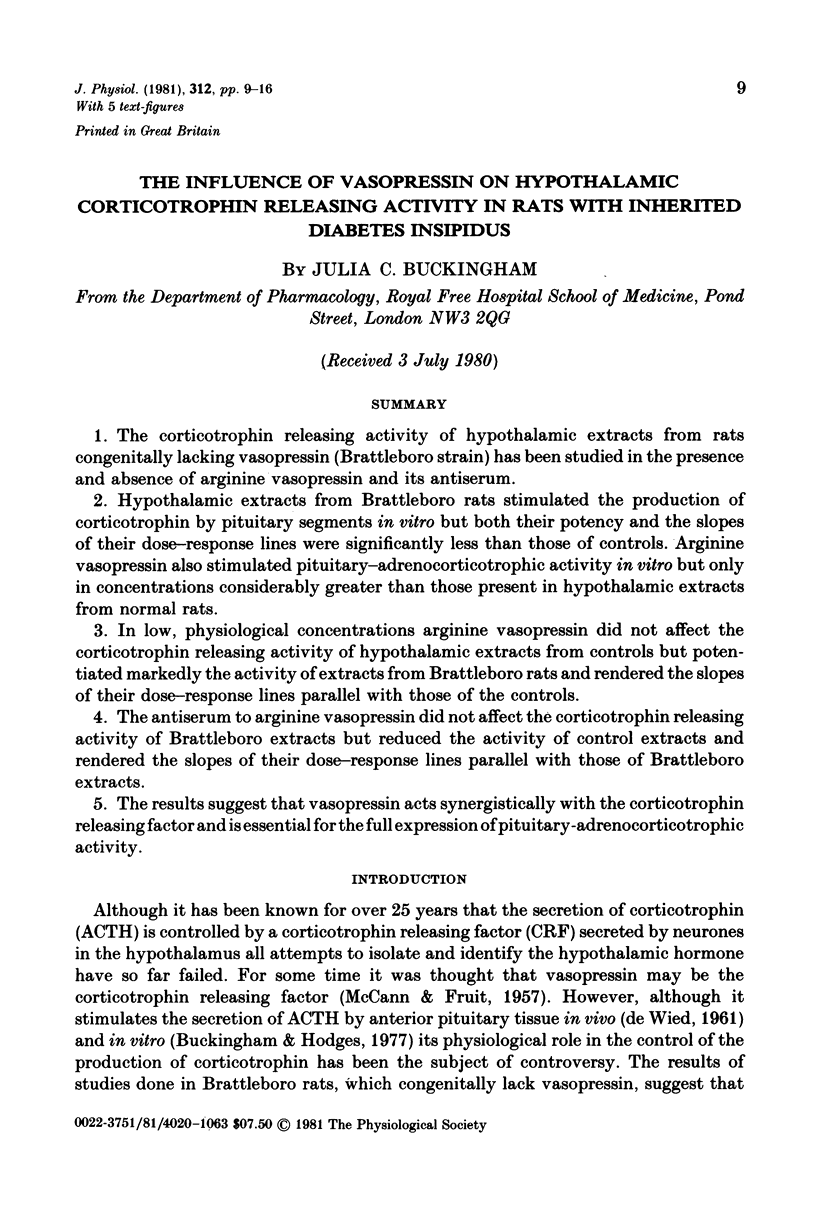
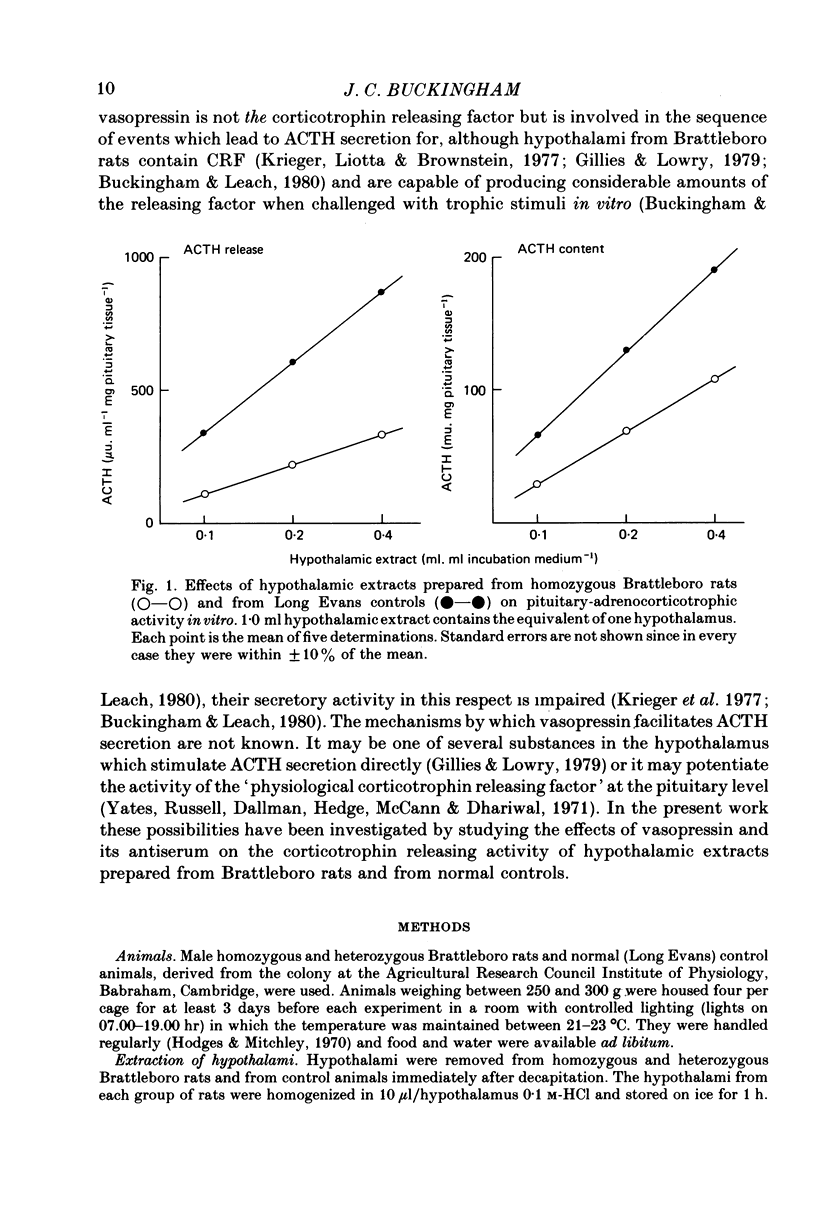
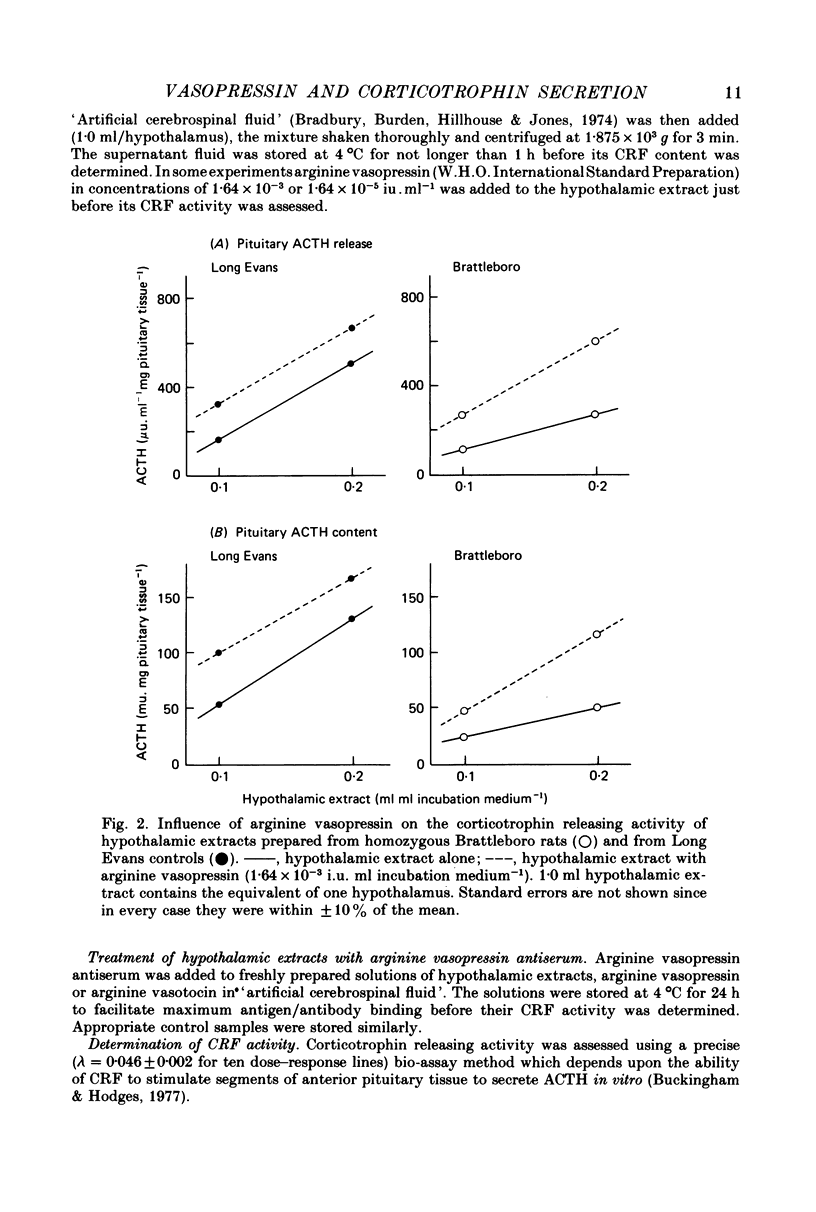
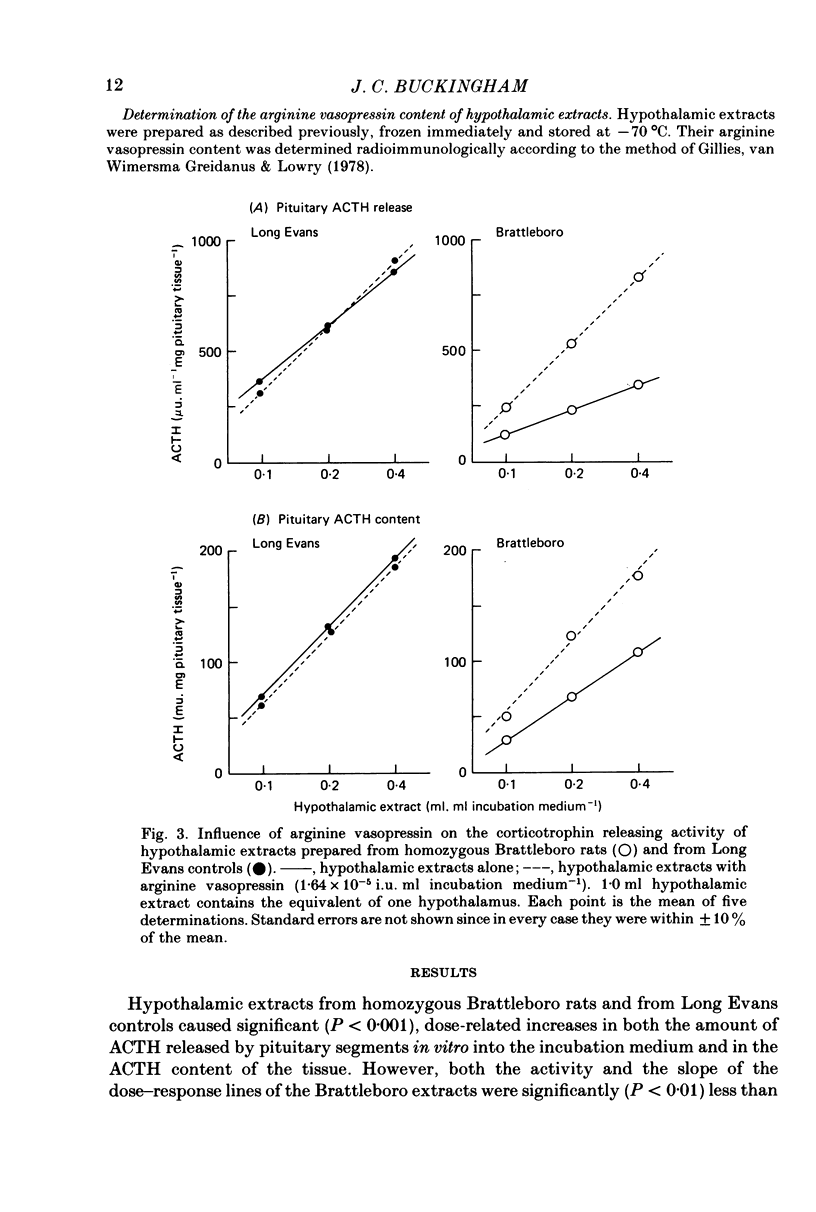
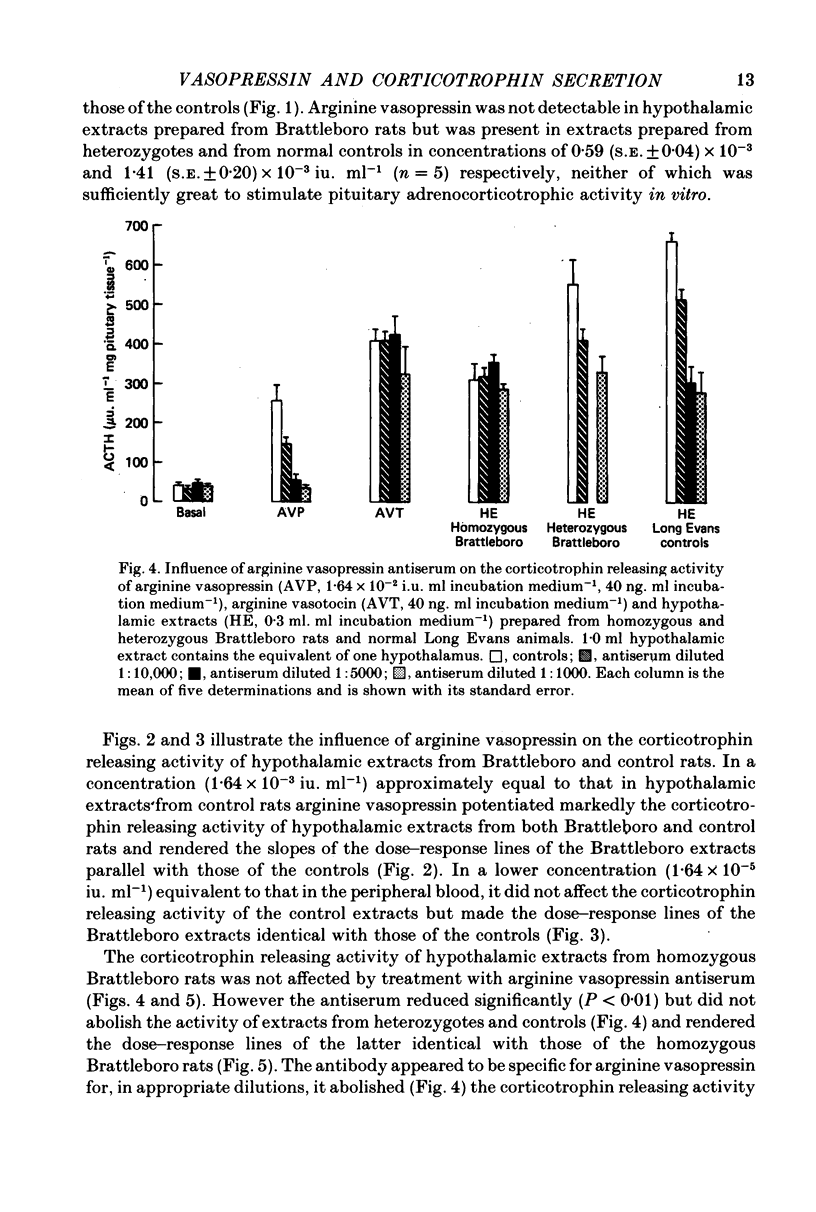
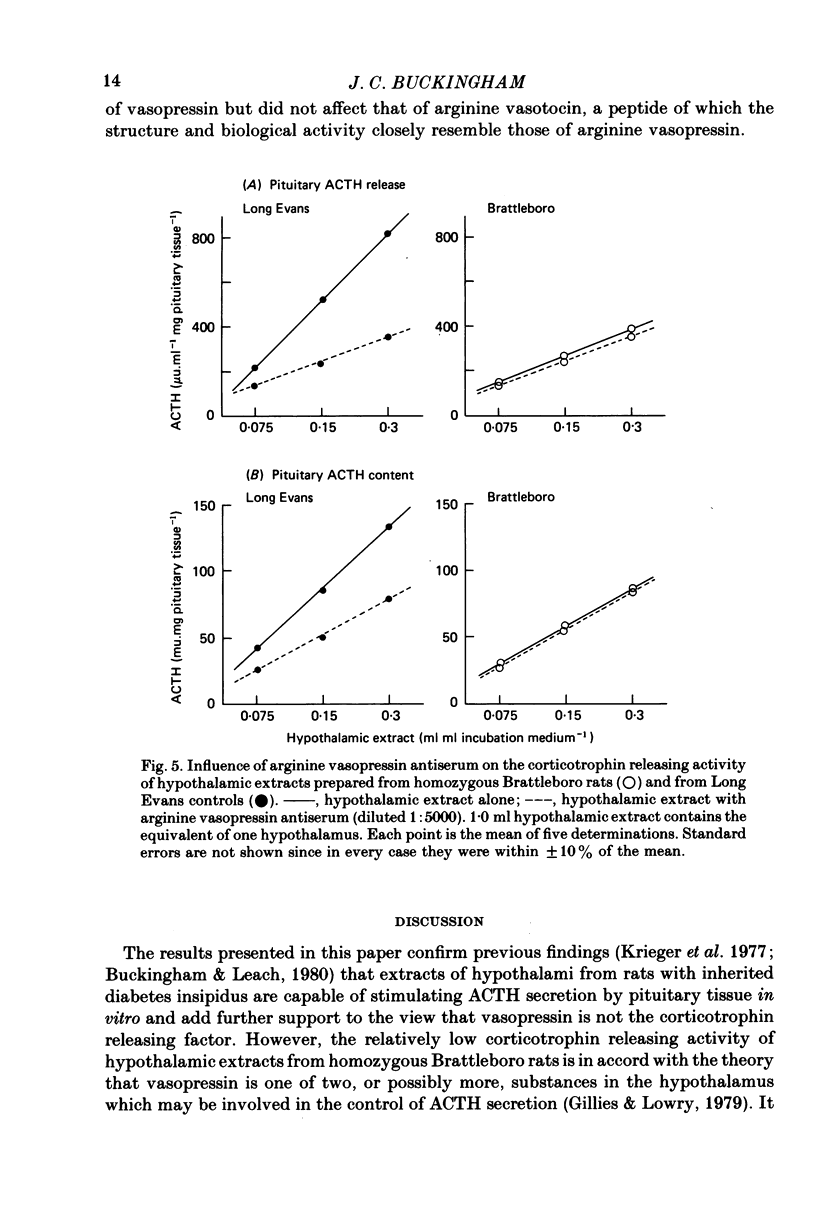
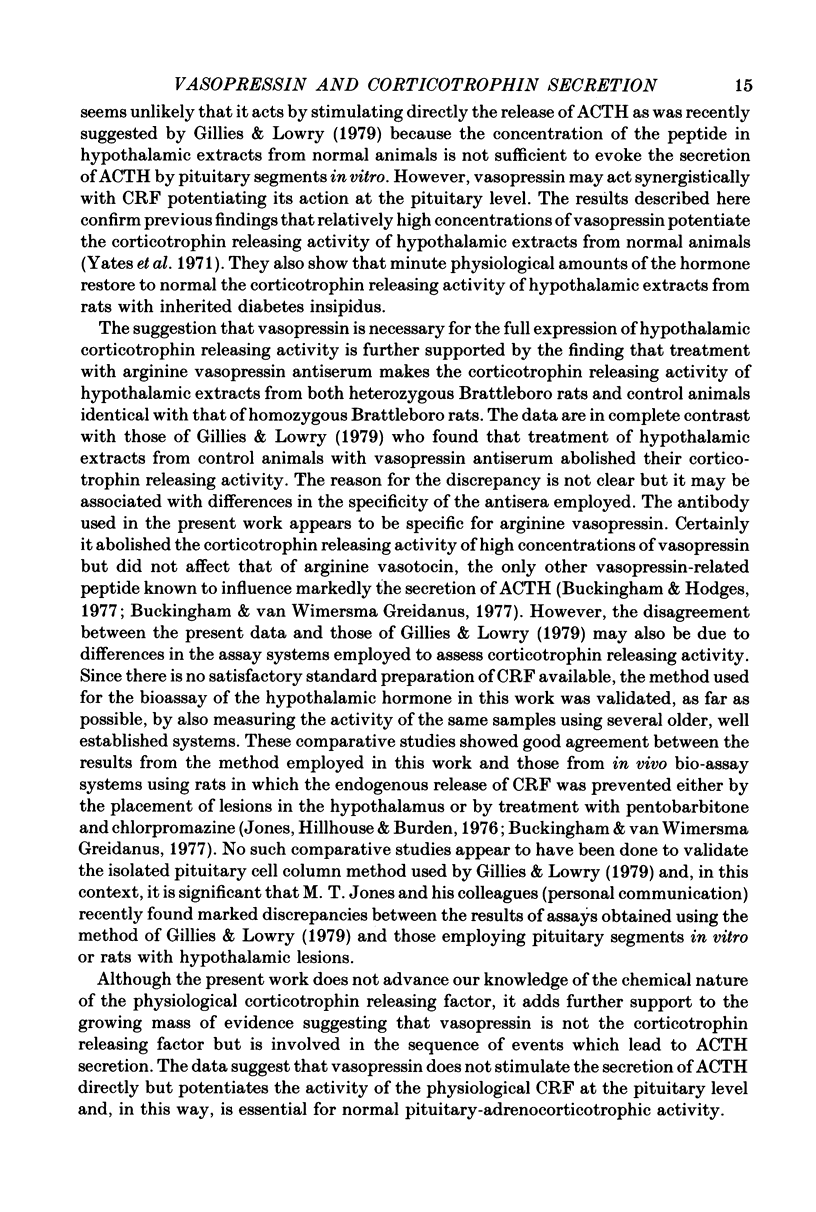
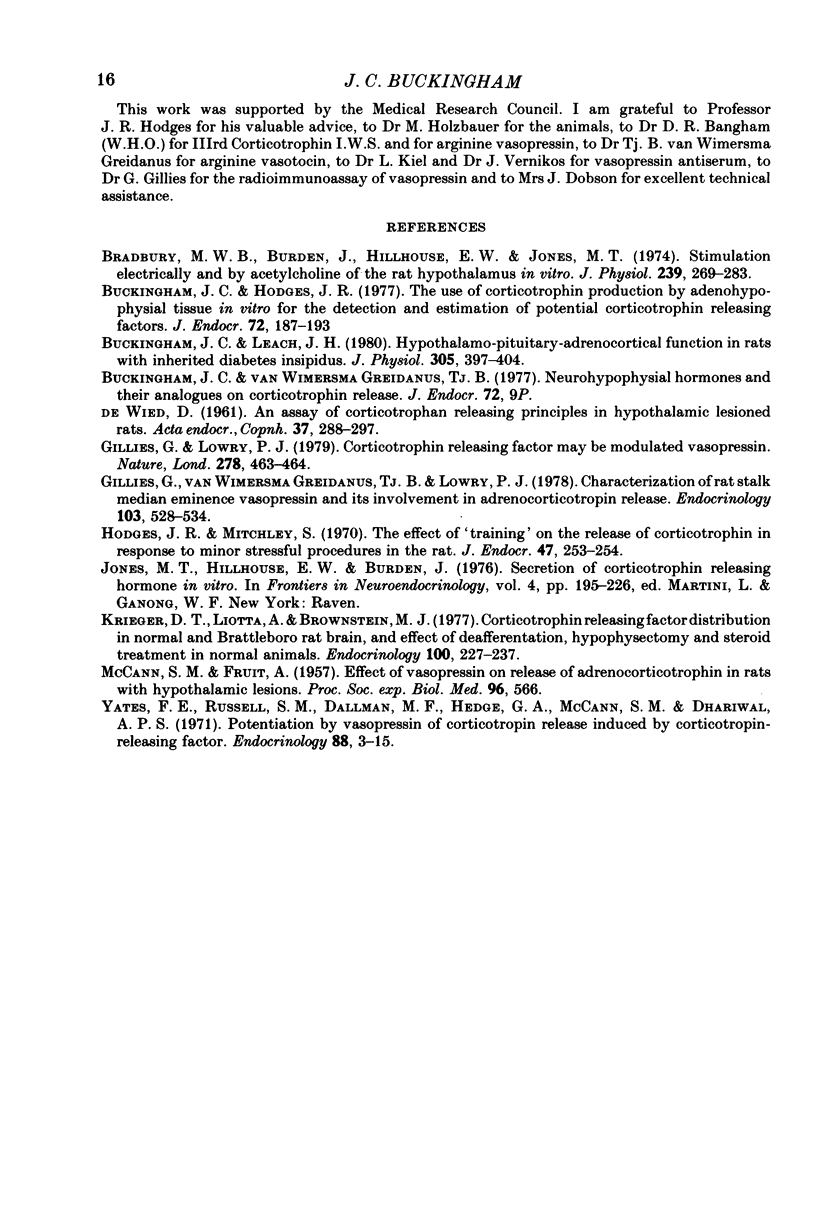
Selected References
These references are in PubMed. This may not be the complete list of references from this article.
- Bradbury M. W., Burden J., Hillhouse E. W., Jones M. T. Stimulation electrically and by acetylcholine of the rat hypothalamus in vitro. J Physiol. 1974 Jun;239(2):269–283. doi: 10.1113/jphysiol.1974.sp010568. [DOI] [PMC free article] [PubMed] [Google Scholar]
- Buckingham J. C., Hodges J. R. The use of corticotrophin production by adenohypophysial tissue in vitro for the detection and estimation of potential corticotrophin releasing factors. J Endocrinol. 1977 Feb;72(2):187–193. doi: 10.1677/joe.0.0720187. [DOI] [PubMed] [Google Scholar]
- Buckingham J. C., Leach J. H. Hypothalamo-pituitary-adrenocortical function in rats with inherited diabetes insipidus. J Physiol. 1980 Aug;305:397–404. doi: 10.1113/jphysiol.1980.sp013371. [DOI] [PMC free article] [PubMed] [Google Scholar]
- Gillies G., Lowry P. Corticotrophin releasing factor may be modulated vasopressin. Nature. 1979 Mar 29;278(5703):463–464. doi: 10.1038/278463a0. [DOI] [PubMed] [Google Scholar]
- Gillies G., Van Wimersma Greidanus T. B., Lowry P. J. Characterization of rat stalk median eminence vasopressin and its involvement in adrenocorticotropin release. Endocrinology. 1978 Aug;103(2):528–534. doi: 10.1210/endo-103-2-528. [DOI] [PubMed] [Google Scholar]
- Hodges J. R., Mitchley S. The effect of 'training' on the release of corticotrophin in response to minor stressful procedures in the rat. J Endocrinol. 1970 Jun;47(2):253–254. doi: 10.1677/joe.0.0470253. [DOI] [PubMed] [Google Scholar]
- McCANN S. M., FRUIT A. Effect of synthetic vasopressin on release of adrenocorticotrophin in rats with hypothalamic lesions. Proc Soc Exp Biol Med. 1957 Dec;96(3):566–567. doi: 10.3181/00379727-96-23541. [DOI] [PubMed] [Google Scholar]
- Yates F. E., Russell S. M., Dallman M. F., Hodge G. A., McCann S. M., Dhariwal A. P. Potentiation by vasopressin of corticotropin release induced by corticotropin-releasing factor. Endocrinology. 1971 Jan;88(1):3–15. doi: 10.1210/endo-88-1-3. [DOI] [PubMed] [Google Scholar]
- de WIED An assay of corticotrophin-releasing principles in hypothalamic lesioned rats. Acta Endocrinol (Copenh) 1961 Jun;37:288–297. doi: 10.1530/acta.0.0370288. [DOI] [PubMed] [Google Scholar]


